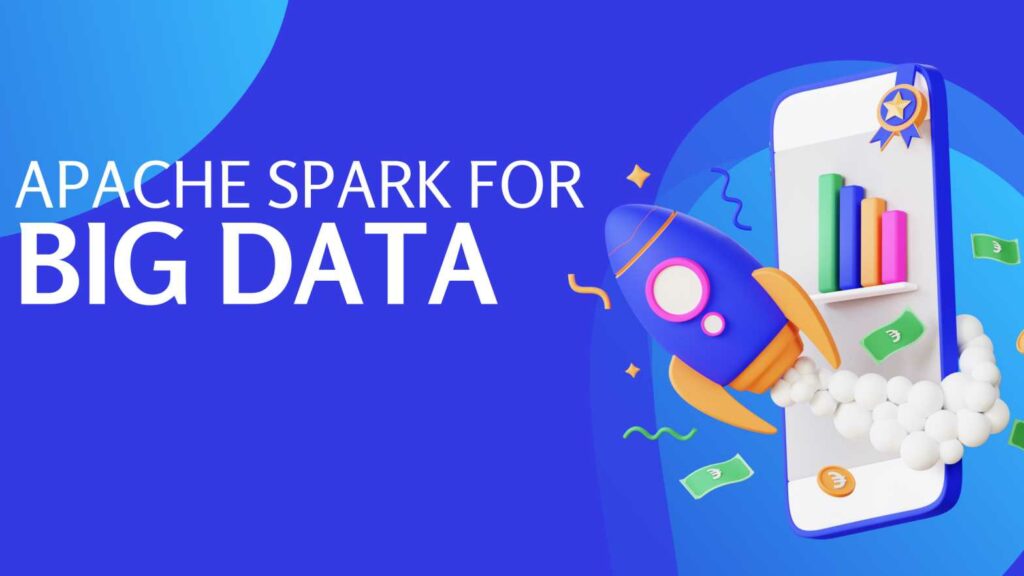Harnessing the immense power of data has become the cornerstone of business, research and innovation. And this is where Apache’s big data framework comes to the rescue. Apache Software Foundation introduced Spark to boost the computational computing software process of the Hadoop. Spark has its own cluster management that negates its dependency on Hadoop. Spark is not an upgraded version of Hadoop. Hadoop is used as one of the ways to implement Spark. Spark uses Hadoop for storage as it owns cluster management computation.
If you are an aspiring Data Scientist, pursuing a data science course will help you gather in-depth knowledge of this open-source distributed processing system. Meanwhile, this article covers the important aspects of Apache Spark, such as benefits and components that will help you build a career in data science and data analytics. Read through the article to unlock the potential of Apache Spark for big data.
What is Apache Spark?
Apache Spark is a data processing framework used to perform processing tasks instantly on enormous data sets. It can also give out data processing operations across multiple computer systems, either with the help of other computing tools or on its own. These two qualities of Spark make it stand out in the world of big data. Spark makes it easier to assemble massive computing power. Spark uses an easy-to-use API to reduce the programming burden of developers by minimising the work of distributed computing and big data processing.
Apache Spark: Evolution
One of the sub-projects of Hadoop, Spark, was developed in 2009 by Matei Zaharia in UC Berkeley’s AMPLab. In 2010, it was open-sourced under a BSD license. In 2013, Spark was donated to the Apache Software Foundation. Apache Spark has now claimed the top position as an Apache project.
Apache Spark: Benefits
Below are the features of Apache Spark:
- Multi-language support
Spark's built-in APIs in Python, Java, or Scala help write applications in multiple languages.
- Speed
An application in the Hadoop cluster can run up to 100 times faster in memory with the help of Spark. When running on disk, an application runs 10 times faster.
The intermediate processing data is stored in the memory.
- Advanced Analytics
In addition to 'Map' and 'reduce', Spark also supports SQL queries, machine learning (ML), streaming data, and graph algorithms.
- Augments the accessibility of big data
A recent survey conducted by IBM states that Apache Spark is liable to open up several opportunities for big data by conducting data science training and data analytics courses for over 1 million aspirants. Hence, the scope for becoming a Data Analyst will get higher.
- Apache Spark is dynamic in nature
Spark has 80 high-level operators for interactive querying. These help develop parallel applications with ease.
- Potential to handle challenges
Apache Spark is designed to mitigate various analytics challenges due to its low-latency in-memory data processing capability.
- Spark developers are in demand
Besides benefiting organisations, Apache Spark holds scope for a career in data analytics and data science. The demand for Spark developers is huge in companies. Some companies offer several benefits to attract highly skilled experts in Apache Spark.
- Apache Spark is open-source
One of the major significance of Apache Spark is that it has an immense open-source community.
Components of Spark
The different components of Spark are discussed below:
Apache Spark Core
Spark Core is considered the platform on which all other functionality is built. Hence, this general execution engine underlies the entire distributed processing system. Data Analysts can conduct dataset referencing and in-memory computing in external storage systems thanks to the Spark Core.
Spark Streaming
Using the fast scheduling ability of Spark Core, Spark Streaming executes streaming analytics. It imports data in small batches and conducts RDD transformations (resilient distributed datasets).
GraphX
GraphX is a graph processing framework that is distributed on top of Spark. It has an API that is used to express graph computation. It can model the user-defined graphs using Pregel abstraction API. GraphX‘s offered runtime also optimises abstraction.
Spark SQL
A component on top of Spark Core, Spark SQL, brings in a new data abstraction known as SchemaRDD. It supports structured and semi-structured data.
MLlib (Machine Learning Library)
Owing to the distributed memory-based Spark architecture, MLlib acts as a distributed machine learning framework. According to benchmarks, MLlib is done by the developers against the ALS (Alternating Least Squares) implementations.
MLflow (Machine Learning Flow)
MLflow is an open-source platform used to handle the life cycle of machine learning. It is not technically considered a part of the Apache Spark project. However, it is a product in the Apache Spark community. The community attempts to amalgamate MLflow with Apache Spark to provide MLOps features. These features include experiment tracking, packaging, model registries, and UDFs that can be imported at Apache Spark scale with much convenience for interference with traditional SQL statements.
Delta Lake
Like MLflow, Delta Lake is considered a separate project not directly under Apache Spark. Nevertheless, due to its significance, Delta Lake has gained prominence in the Spark ecosystem. Delta Lake eliminates the requirement of a data warehouse separately for BI users.
Conclusion
The remarkable advantages and components of Apache Spark for big data help promote the operational growth of the companies. Hence, companies look for expert Spark developers to scale up in the business world.
Given the opportunities, opting for a data science certification or a data analytics course is a prudent choice to stand out in the job market. The Postgraduate Programme in Data Science and Analytics brought to you by Imarticus Learning is one such course for fresh graduates and career professionals from tech backgrounds. It is a 6-month programme with 10 guaranteed interviews. Head to their website to learn more!








